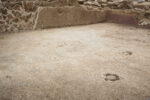 An excavation on the summit of Mt. Cavalier, the highest point of the city of Nîmes and the site where the first fortified settlement was built by the Volcae Arecomici people, has revealed the remains of an ancient neighborhood dating back to the early years of the Gallic city of Nemausus. Pottery found at the site dates to the 4th century B.C. and the area was in continuous use to the end of the 2nd century.
An excavation on the summit of Mt. Cavalier, the highest point of the city of Nîmes and the site where the first fortified settlement was built by the Volcae Arecomici people, has revealed the remains of an ancient neighborhood dating back to the early years of the Gallic city of Nemausus. Pottery found at the site dates to the 4th century B.C. and the area was in continuous use to the end of the 2nd century.
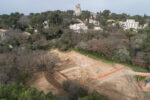 The city of Nemausus long preceded the Roman colony that was founded by veterans of Julius Caesar’s Egyptian campaigns in the 1st century B.C. There is evidence of human occupation going back to the Bronze Age, and the Volcae fortified the hilltop, encircling it with defensive walls in the 3rd and 2nd centuries B.C. and building a dry-stone tower that was later incorporated into the Tour Magne, the only surviving remnant of the defensive walls erected by Augustus in the 1st century A.D.
The city of Nemausus long preceded the Roman colony that was founded by veterans of Julius Caesar’s Egyptian campaigns in the 1st century B.C. There is evidence of human occupation going back to the Bronze Age, and the Volcae fortified the hilltop, encircling it with defensive walls in the 3rd and 2nd centuries B.C. and building a dry-stone tower that was later incorporated into the Tour Magne, the only surviving remnant of the defensive walls erected by Augustus in the 1st century A.D.
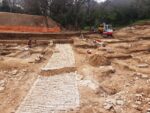 Most of the construction in the newly-discovered neighborhood dates to between the early 1st century BC and the reign of Augustus (d. 14 A.D.). Houses were built in Roman style, with central courtyards and walls painted with frescoes in the Second Pompeiian style. The road between two grids of houses was meticulously paved in the 1st century and is in excellent condition. The occupants were Romanized, but they still upheld Gallic cultural traditions. Archaeologists found two small votive altars in one of the homes. One of the altars bears the name of the Celtic goddess Proxumis.
Most of the construction in the newly-discovered neighborhood dates to between the early 1st century BC and the reign of Augustus (d. 14 A.D.). Houses were built in Roman style, with central courtyards and walls painted with frescoes in the Second Pompeiian style. The road between two grids of houses was meticulously paved in the 1st century and is in excellent condition. The occupants were Romanized, but they still upheld Gallic cultural traditions. Archaeologists found two small votive altars in one of the homes. One of the altars bears the name of the Celtic goddess Proxumis.
The construction techniques used to build the houses were also typically Gallic. The lower parts of the walls were made masonry, but most everything else was built with raw earth, either molded into bricks or built up without using any forms, or a combination of both.
The scale of the work required a significant contribution of material, provided by craftsmen working in nearby quarries. All of these constructions called on professional trades specialists in earthen buildings, an ancient technique well mastered by the Celtic populations of the south of Gaul. This technology is still present during the Roman era, betraying for a long time the Volcian heritage in the architecture of the city.
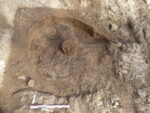 Somewhere between the 1st and 2nd century, the neighborhood shifted from residential to commercial uses, including the production of ceramics. The neighborhood was abandoned at the end of the 2nd century and the land converted to agricultural use.
Somewhere between the 1st and 2nd century, the neighborhood shifted from residential to commercial uses, including the production of ceramics. The neighborhood was abandoned at the end of the 2nd century and the land converted to agricultural use.
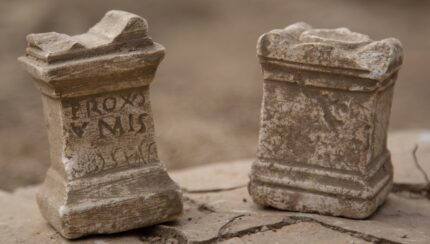
Good old Proxamis, the god that is always close by.
:notworthy: — Nearer proximis to thee…
A proximate god, or near enough.